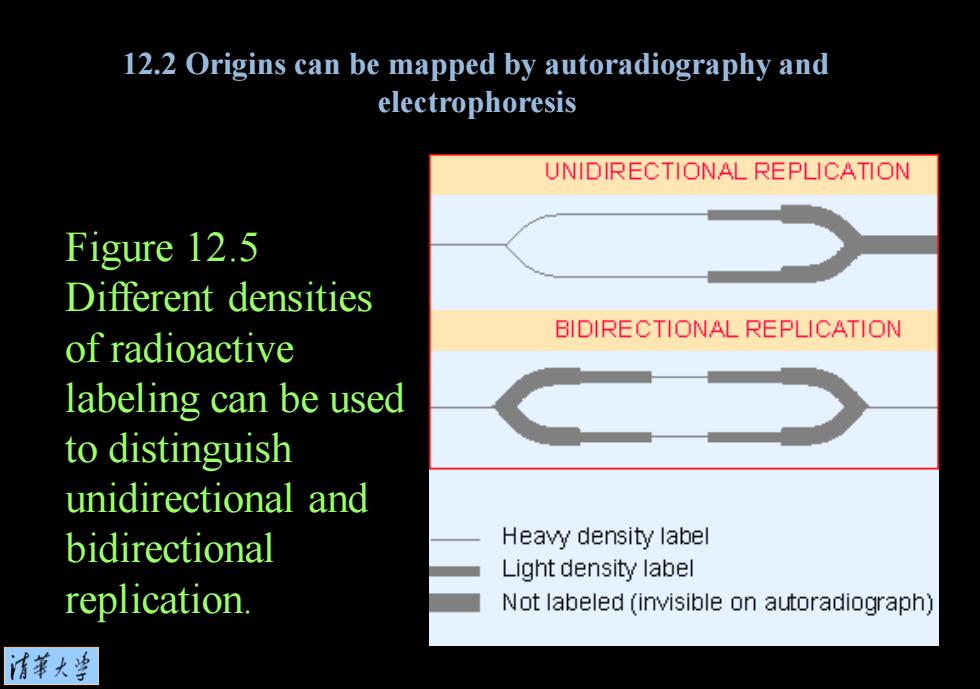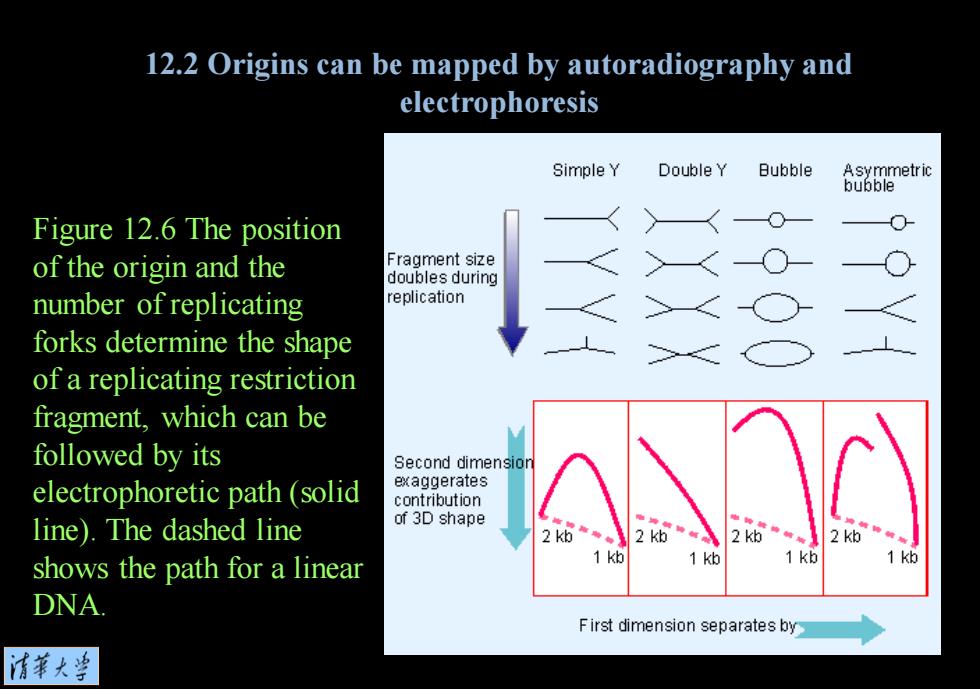
12.2 Origins can be mapped by autoradiography and electrophoresis UNIDIRECTIONAL REPLICATION Figure 12.5 Different densities BIDIRECTIONAL REPLICATION of radioactive labeling can be used to distinguish unidirectional and bidirectional Heavy density label Light density label replication. Not labeled (invisible on autoradiograph) 清菜大当
Figure 12.5 Different densities of radioactive labeling can be used to distinguish unidirectional and bidirectional replication. 12.2 Origins can be mapped by autoradiography and electrophoresis

12.2 Origins can be mapped by autoradiography and electrophoresis SimpleY DoubleY Bubble Asymmetric bubble Figure 12.6 The position of the origin and the Fragment size doubles during number of replicating replication forks determine the shape of a replicating restriction fragment,which can be followed by its Second dimension electrophoretic path (solid exaggerates contribution line).The dashed line of 3D shape 2 kb shows the path for a linear 1k 1 kb 1 kb 1 kb DNA. First dimension separates by 清菜大当
Figure 12.6 The position of the origin and the number of replicating forks determine the shape of a replicating restriction fragment, which can be followed by its electrophoretic path (solid line). The dashed line shows the path for a linear DNA. 12.2 Origins can be mapped by autoradiography and electrophoresis

Forks 12.3 The bacterial genome is a single meetAATTAGTATGTTGTAACTAAAGT circular replicon TTAATCATACAACATTGATTTCA terE,D.A terC,8 terminate fork, temminate fork 2 Figure 12.7 Replication termini in E.coli are located beyond the point at which the replication forks actually meet. Replication fork 2 Origin Replication fork 1 清菜大兰
Figure 12.7 Replication termini in E. coli are located beyond the point at which the replication forks actually meet. 12.3 The bacterial genome is a single circular replicon

12.3 The Forks bacterial genome is a single meeL TTAGTATGTTGTAACTAAAGT circular replicon TTAATCATACAACATTGATTTCA terE,D.A terC,8 terminate fork, temminate fork 2 Figure 12.7 Replication termini in E.coli are located beyond the point at which the replication forks actually meet. Replication fork 2 Origin Replication fork 1 情華大当
Figure 12.7 Replication termini in E. coli are located beyond the point at which the replication forks actually meet. 12.3 The bacterial genome is a single circular replicon

12.4 Each eukaryotic chromosome contains many replicons S phase is the restricted part of the eukaryotic cell cycle during which synthesis of DNA occurs. 清菜大兰
S phase is the restricted part of the eukaryotic cell cycle during which synthesis of DNA occurs. 12.4 Each eukaryotic chromosome contains many replicons